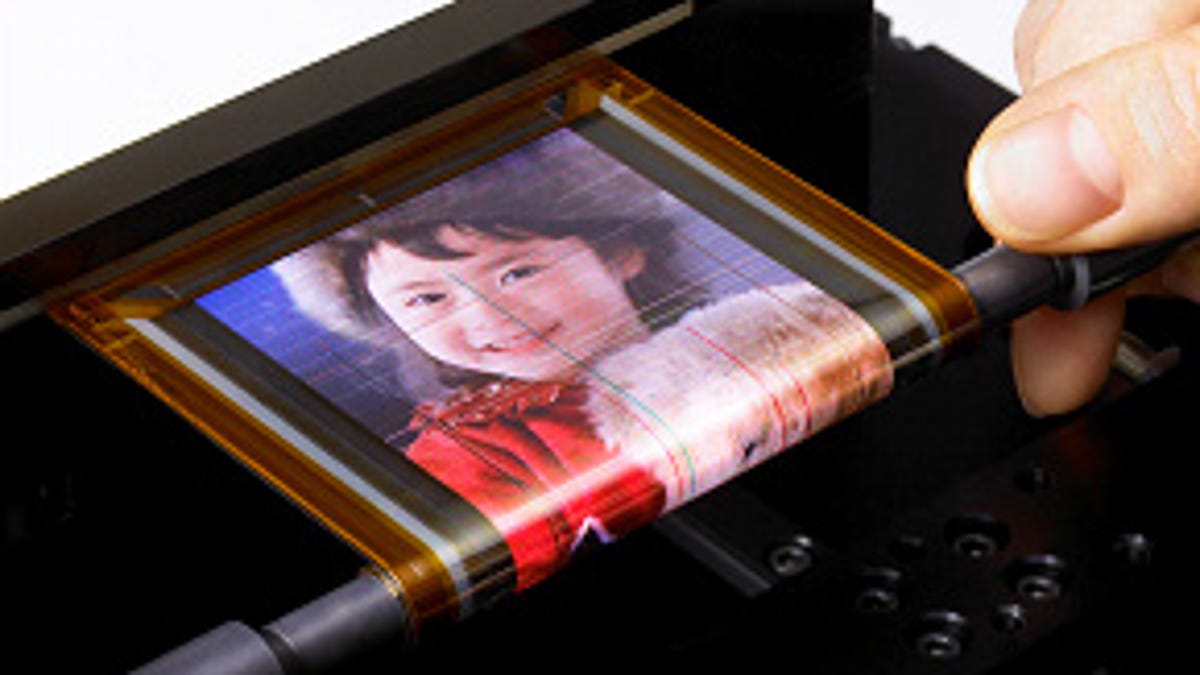Sony unveils ultrathin rollable OLED
Ultrathin OLED screen could continue to play video while being rolled around a pen.

Sony on Wednesday unveiled a flexible OLED (organic light-emitting diode) display so thin it can wrap around a 4mm cylinder--roughly the diameter of the average pen or pencil.
The 80 micrometers-thick OLED display (about the width of a human hair) can continuously display moving images even while being rolled up, as Sony demonstrated in a video below.
The working flexibility is possible because engineers have managed to lose the rigid driver IC chips usually used in the substrate of a screen in exchange for a gate-driver circuit with OTFTs (organic thin-film transistors), according to Sony.
The 4.1-inch display, which has a resolution of 432x240 pixels (121 pixels per inch), is not for sale. It's simply a research prototype Sony said it hopes to one day incorporate into products such as screens in mobile devices. Full demonstrations of the screen will be given this week at the SID (Society for Information Display) 2010 International Symposium in Seattle.
The consumer electronics giant has been at the forefront of this technology, showing one of the world's first flexible OLEDs in existence at CES 2009, as CNET has reported. That screen was .2 millimeters thick.
Of course, Sony is not the only one experimenting with thin and flexible screens.
In April 2009, Dai Nippon garnered much attention with its flexible and seemingly animated posters for the Rakuten Eagles, a Japanese baseball team. The screens incorporated both energy-saving OLEDs and LEDs.
GE has also been working on ultrathin OLEDs, but in an effort to apply the technology to its lighting products. In March 2008, GE unveiled thin and flexible lighting OLEDs that can be manufactured in rolls akin to newspapers on a printing press.

